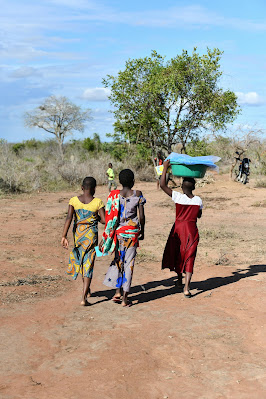Foreign Aid Cuts and Global Development Part 2 – Asrar Qureshi’s Blog Post #1122
Foreign Aid Cuts and Global Development Part 2 – Asrar Qureshi’s Blog Post #1122
Dear Colleagues! This is Asrar Qureshi’s Blog Post #1122 for Pharma Veterans. Pharma Veterans Blogs are published by Asrar Qureshi on its dedicated site https://pharmaveterans.com. Please email to pharmaveterans2017@gmail.com for publishing your contributions here.
 |
| Credit: artsy solomon |
 |
| Credit: babajide olusanya |
 |
| Credit: Muhammad Al Bazzar |
 |
| Credit: rosa stone |
 |
| Credit: themeditators |
Continued from Previous…..
OECD/DAC/ODA
The OECD – Organization for Economic Cooperation and Development – consists of 38 countries, primarily developed nations, including Australia, Canada, France, Germany, Japan, UK, and USA. These countries collaborate to promote economic growth, trade, and policies that improve the wellbeing of citizens of these countries. There were 20 founding countries who signed the convention in 1960. Later 18 other countries joined in. 8 more countries are waiting to join in, while 5 countries are taken as key partners.
DAC – Development Assistance Committee – is the organ of OECD that reviews the economic needs of countries based on their per capita income and development status.
ODA – Official Development Assistance is the aid which DAC listed countries are eligible to receive. Presently, the number of DAC listed countries stands at over 80 countries
As can be seen above, this process had been going on for 65 years. Over time, some countries who were very poor became better and were graduated out of list. Some probably went down also.
In a way it is ironic, that the developed countries keep looting from these countries and keep them poor and downtrodden. Then they use a small part of the looted money and send it back as ODA. It is not their money in the first place, and they have no right to slash the funding under this head. But they are doing it with great impunity.
The process has not started in 2025; it had started as early as 2021, but on a nominal basis. Since 2024, this has taken force. President Trump did not do it overnight; he had already planned it. Prime Minister Sir Kier Starmer has immediately followed suit, as UK has been doing so obviously for quite a long time.
The most interesting, or disturbing fact that the aid cuts are being applied to divert this money to increase defense spending. Rather than working to make the world a better place, they are planning to make it hell.
United States: A Shocking 83–90% Plunge
USAID funding froze or was slashed by around 90%, impacting over 5,200 programs globally—this includes projects in health, education, sanitation, climate resilience, and humanitarian response.
Humanitarian fallout is immediate. In northeastern Nigeria alone, USAID-funded nutrition programs abruptly ended, threatening up to 1 million malnourished children and potentially leading to 163,500 additional child deaths annually.
Global public health hangs in the balance. Pre-freeze, USAID was credited with preventing almost 1.65 million HIV/AIDS deaths, about 500,000 vaccine-preventable deaths, about 310,000 TB deaths, and about 290,000 malaria fatalities annually.
UNAIDS warns that this “freezing” could result in a 400% rise in AIDS-related mortality in the next few years.
United Kingdom: From 0.7% to 0.3% of GNI – Billions Cut
The UK reversed its 0.7% GNI aid pledge, triggering a £6 billion budget reduction, about 40% of its overseas aid envelope. Programs tackling HIV, maternal health, vaccines, and education observed sharp foldbacks, up to 80% cuts in some cases.
Organizations like Save the Children state 55 million individuals face reduced health, food, and education support across Africa and the Middle East.
Australia & EU: Similar Contraction
Australia’s latest aid rounds represent its largest-ever reductions, a 33% multi-year drop and a one-year decline of 20%.
Countries like the Netherlands, France, Belgium, and Sweden have cut ODA budgets by 25–37%, while the Netherlands plans to cut from €1.4 billion to €400 million from 2026 onward.
OECD data shows ODA to Sub‑Saharan Africa plummeted 7.8% just between 2021 and 2022—despite rising humanitarian needs.
What Does This Mean in Total
One analyst estimates that aid cuts across 10 major donor countries could trim total global aid by 25% by 2027.With over 122 million people displaced by war and global aid funding at 2015 levels, the shrinking assistance envelope is alarming.
UNDP chief Achim Steiner warns we’ve hit a “tipping point”, with tens of billions slashed from food security, disease prevention, and refugee support.
How It Affects NGOs & Civil Society
Program Shutdowns & Project Abandonment – For organizations heavily reliant on USAID and UK aid, the result is project closures, staff layoffs, and halted operations—from HIV clinics in South Africa to sanitation projects in Syria. NGO staff report stop-work orders affecting thousands of health, education, humanitarian, and civic programs in fragile settings.
Decline in Civil Society Support – Democracy, governance, and human rights initiatives have been hit hard—Voice of America, Radio Free Asia, and anti-corruption projects have lost funding, bolstering authoritarian governance. Feminist advocacy, women’s health services, and gender-based violence prevention are marginalized.
The Funding Vacuum – Many NGOs scramble to fill funding gaps via private philanthropy, corporate partnerships, and social enterprise models, but these sources lack scale and stability. Some national governments and NGOs are turning to localization—transferring responsibilities and funds to domestic actors, as foreign dollars decrease.
Consequences for Developing Nations
Public Health Meltdown – Cuts to vaccination, maternal care, HIV/TB/malaria treatment threaten to reverse decades of health progress. Abrupt exits are linked to disease resurgence—as seen in Romania when Global Fund departed HIV programs.
Heightened Hunger & Displacement – Aid-dependent communities in Somalia, Yemen, Syria, and Bangladesh face reduced rations, school closures, and famine risks. As humanitarian pipelines shrink, displaced populations exceed 122 million, pushing existing gaps further.
Governance & Security Risks – Aid withdrawal can embolden authoritarian regimes, weaken governance, and exacerbate instability. UN and aid chiefs warn cuts are contributing to fragile governments and rising extremism.
Economic Disruption – NGOs often drive local employment. In Kenya, USAID staff layoffs threaten community jobs and local economies. Cambodia, Nepal, Bangladesh, Pakistan—multiple countries where NGOs and diaspora investments were key now face decreased assistance and stalled development.
Sum Up
The global rollback of aid, from the U.S., UK, Australia, EU, and others, is one of the most consequential developments in recent international development history. The cuts are not minor, they are systemic retrenchments with potential to reverse decades of progress in health, democracy, hunger, and conflict prevention.
For NGOs, the era ahead will be defined by adaptation, innovation, and resilience—but also by existential risk. For developing countries, this is both an opportunity and a peril: the move toward self-reliance and localization may empower long-term sustainability, but only if it’s strategically planned and not enforced through crisis.
We’re at a pivotal moment. The decisions made now, and the partnerships forged, will determine if this era marks a collapse of global solidarity or the birth of a more locally grounded, sustainable aid architecture.
Concluded.
Disclaimers: Pictures in these blogs are taken from free resources at Pexels, Pixabay, Unsplash, and Google. Credit is given where available. If a copyright claim is lodged, we shall remove the picture with appropriate regrets.
For most blogs, I research from several sources which are open to public. Their links are mentioned under references. There is no intent to infringe upon anyone’s copyrights. If, any claim is lodged, it will be acknowledged and recognized duly.
References:
https://www.context.news/money-power-people/why-is-the-worlds-humanitarian-aid-gap-getting-bigger
https://www.context.news/money-power-people/four-humanitarian-crises-that-demand-more-attention-in-2025
https://www.oxfam.ca/news/biggest-ever-aid-cut-by-g7-members-a-death-sentence-for-millions-of-people-says-oxfam/
https://www.oxfam.org.uk/media/press-releases/biggest-ever-aid-cut-by-g7-countries-a-death-sentence-for-millions-of-people-oxfam/
https://www.forbes.com/sites/globalcitizen/2025/02/25/foreign-aid-is-shrinking-what-happens-next/
https://www.ft.com/content/fc2981d1-4298-42e2-8f35-4e4b7da04fcd
https://www.hi-us.org/en/news/amid-funding-cuts-millions-of-people-waiting-for-humanitarian-aid
https://www.developmentaid.org/news-stream/post/189631/cuts-in-aid-budgets



Comments
Post a Comment